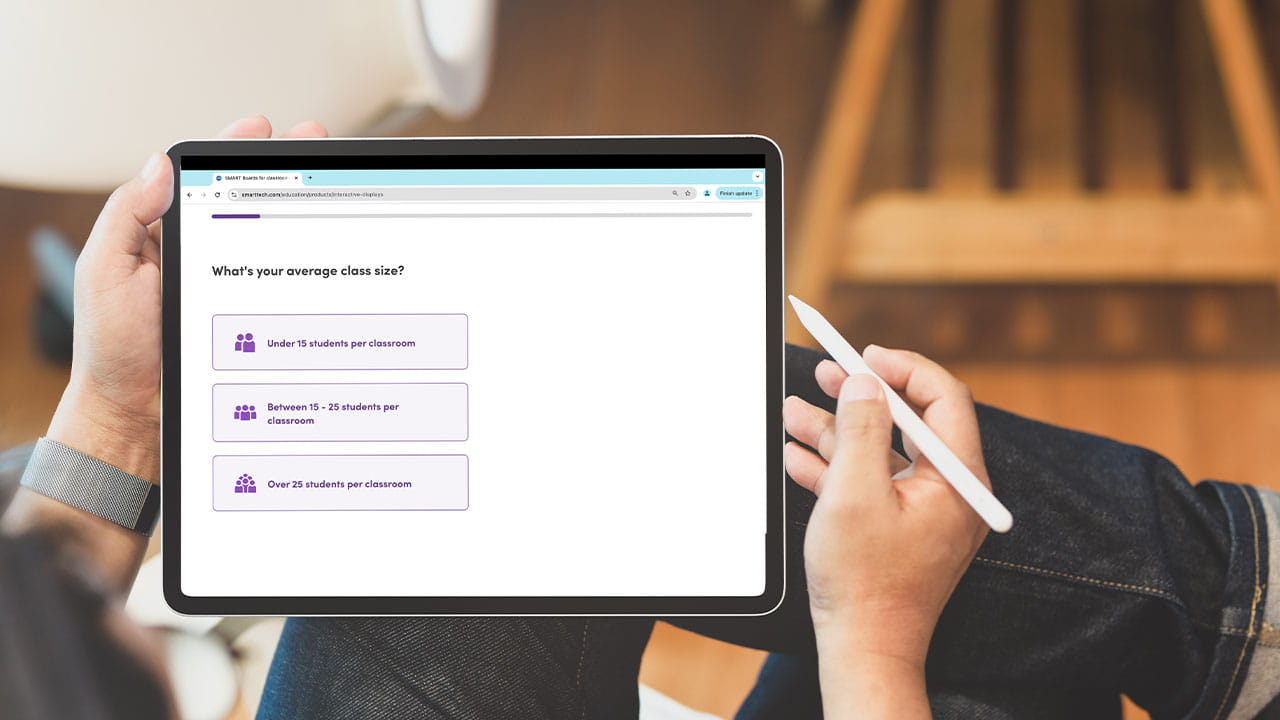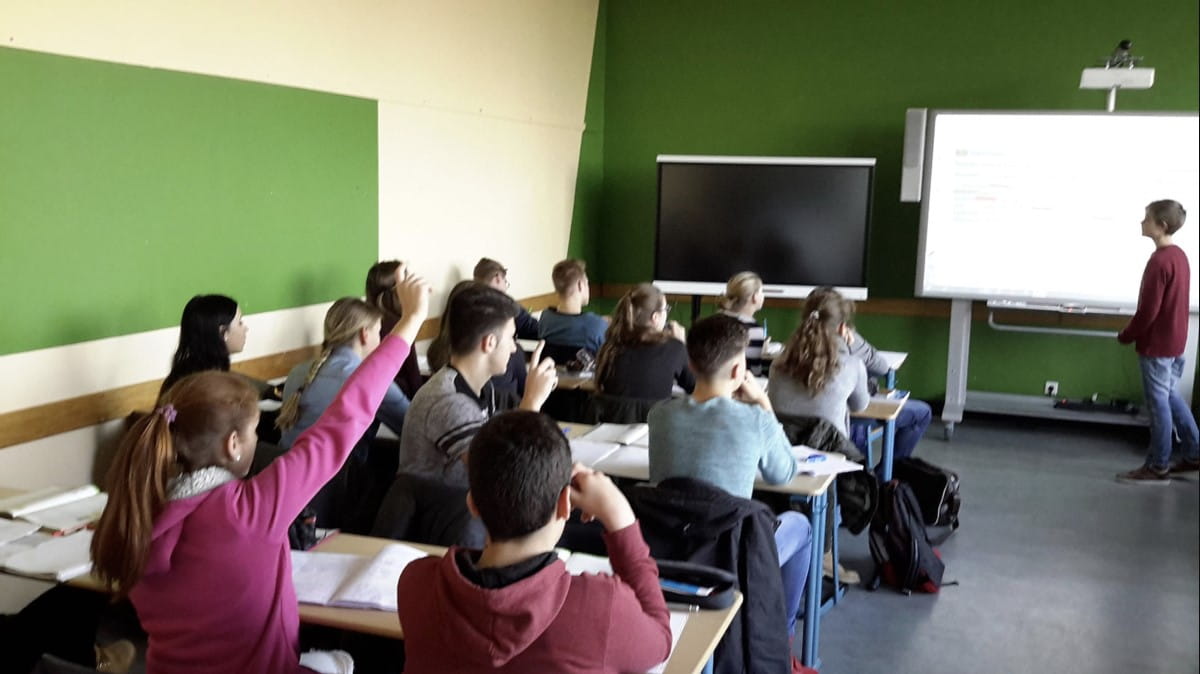Lancaster University researchers gathered data about a German school over a one-year period as it implemented SMART solutions.
The German school puts a strong emphasis on academic learning and preparing for university entrance. As in all German schools, teachers have to mark student attainment based on written and oral work equally.
The school connects 930 pupils, 64 teachers, nine student teachers, and four specialist subject supply teachers. SMART equipped the school with two SMART Boards, SMART Notebook® software, and two SMART Document Cameras. Students aged from 10 to 18 had access to the technology. Teachers taught a variety of subjects using the technology, but the focus was on maths and English.
Spearheaded by Professor Don Passey, the one-year study was aimed at unpacking the real student outcomes and the impact that interactive boards have in the classroom. Let’s dive into the results.
Increasing collaboration for every student
When students used the SMART Boards, whole-class discussions were more collaborative and individual student participation increased; an important factor when nurturing communication and collaborative students. When students are empowered to collaborate and connect, they enter the workforce with the skills employees look for.
When using the technology, students started sharing more and learned more from one another. Teachers at the German school noted an increase in student engagement that led to greater understanding.
According to the study, teachers observed that short-term learning often resulted in a deeper understanding in various situations. Although it differs from long-term memorisation, it was noted that heightened interest, engagement, interaction, and participation contributed to improving the chances of long-term learning. Additionally, students mentioned that the faster pace of lessons helped them maintain focus and engagement.
Keeping students engaged throughout the learning day
Even the students highlighted benefits such as how accessing resources and class content inside and outside the classroom became much easier. They also reported a better understanding of subject topics due to clearer visualisation and opportunities to revisit shared work on the board.
Students also reported that when they weren’t using SMART Boards, their attention and focus tended to wander more.
Better visibility of concepts on-screen
Students said they had difficulty seeing details when their teachers used older-model TVs or chalkboards in the classroom. When students had better visibility, they were better able to share their work with others.
The SMART Boards enabled this sharing by providing wider visibility throughout the classroom.
The benefit of interactive technology is most often the ability to immerse yourself in the content. Learning is no longer about memorisation alone, but experiencing and applying knowledge.
Sharing resources efficiently and building capacity
Teachers reported that they benefited from having access to a wider range of resources in lesson notes, including being able to access previous work and share saved work with students.
This easy access to resources, and the ease at which students and their teachers moved between media, also meant that teachers and students could save time that was once spent locating content and resources. This keeps everyone on task and makes classroom time quality time.
The benefit to the users: students and teachers
Responses in the study indicated that the digital technologies were helping students and teachers in a variety of ways:
- Teachers could easily access and integrate online resources to create more interesting lessons
- Students felt more engaged and less distracted in lessons, which made it easier to actively participate
- Teachers were able to score active student participation higher, which led to higher oral marks for students, and higher marks overall
- Students valued the opportunity to review and revise work done in lessons outside the classroom
Dive deeper into the outcomes fostered by SMART solutions. Read the full Lancaster University study here.
Explore more SMART customer stories here:


